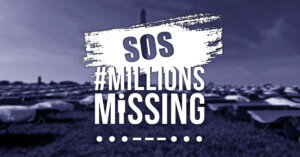Queen Mary University of London (QMUL), acting on behalf of the authors of the highly controversial PACE trial, has rejected a request made by a group of scientists for raw, anonymised data from the trial.
The group was led by world-famous geneticist Professor Ron Davis of Stanford University, whose son, Whitney Dafoe, is gravely ill with ME/CFS. Professor Davis was joined in his request by biostatistician Professor Bruce Levin and immunologist Professor Vincent Racaniello, both of Columbia University, and Dr. David Tuller, Lecturer in Public Health and Journalism at the University of California, Berkeley.
The scientists had requested data that would allow them to conduct analyses that the PACE authors had themselves specified in the original study protocol but abandoned. The analyses were replaced by others with “thresholds on the primary outcomes that indicated worse health than the study’s own entry criteria.” The analyses have been widely criticised and are the subject of an 11,000-strong petition asking the journals that published them to retract them.
Professor Davis and his colleagues made the request under the Freedom of Infomation Act, and QMUL waited the maximum allowable 20 working days before responding. Professor Racaniello, publishing the rejection letter on his Virology Blog, quipped, “At least we’re not vexatious,” in an apparent reference to QMUL’s history of dismissing PACE data requests on those grounds. The rejection was, said Dr Tuller, “as we expected.”
The letter claims that the data are exempt from disclosure because patients in the trial were guaranteed confidentiality and because the data “form part of an ongoing programme of research”. But, QMUL noted, “the PACE PIs and their associated organisations are currently reviewing a data sharing policy.”
Professor Davis and his group have 40 working days to appeal the decision. Meanwhile, Professor James Coyne has said that PLOS One’s lawyers and the PACE authors’ lawyers are “squaring off” over his own request for data relating to a PACE paper published in the journal, and an Information Rights Tribunal is due to soon hear the case of a patient who was refused PACE data by QMUL.

Writers Guild Initiative Writing Workshops: Apply Today
#MEAction is excited to announce we are partnering with the Writers Guild Initiative (WGI) again to offer creative writing workshops for people with ME and Long COVID**. WGI has graciously donated their time to offer these writer workshops through personal mentorship with the writers of the #MEAction community! The workshops consist of three sessions during



